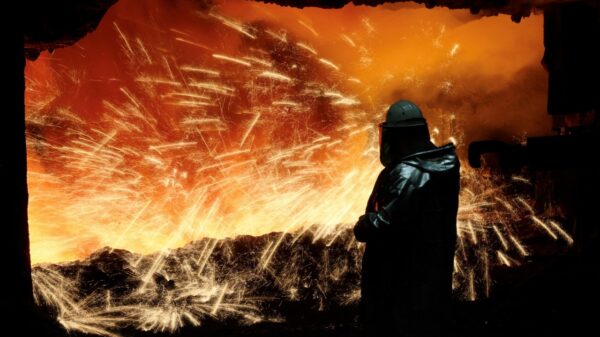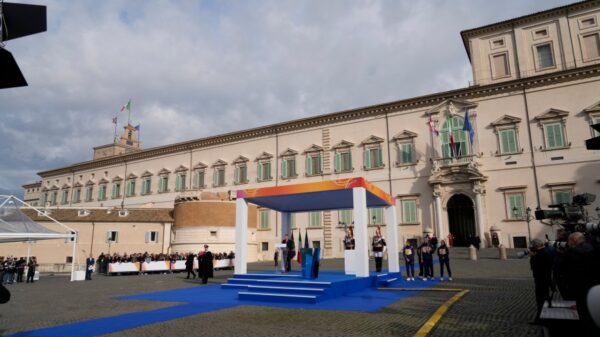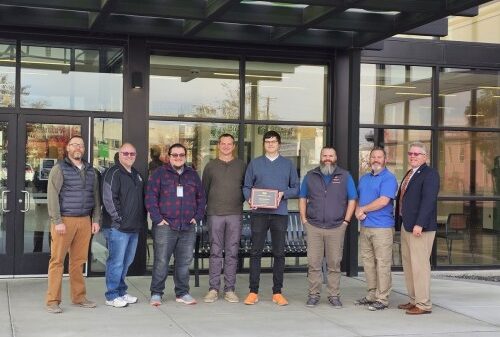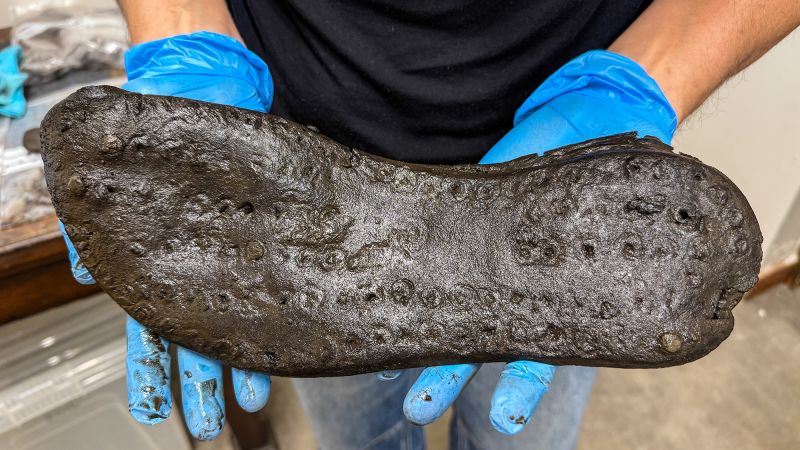Archaeologists have made a significant discovery near Hadrian’s Wall in northern Britain, unearthing a collection of unusually large shoes at the site of Magna Fort, a first-century military installation. This find raises intriguing questions about the lives of the Roman soldiers who once inhabited the fort, which served as a vital defense against invasions from the north. Among the 34 pieces of footwear recovered, eight shoes exceeded 11.8 inches (30 centimeters) in length, suggesting the possible presence of exceptionally tall troops guarding the Roman Empire’s northwestern frontier.
Unpacking the Discovery
The excavation team, led by senior archaeologist Rachel Frame, made the discovery in May. The shoes found at Magna Fort included work boots, baby-sized shoes, and notably, several pairs that would correspond to a US men’s size 13.5 or greater. In contrast, average shoes from nearby Roman forts typically measured around US men’s size 8. Frame noted that the initial excitement surrounding the large shoes led to various hypotheses about their purpose. “We were looking for many explanations, like maybe it’s their winter shoes, or people were stuffing them, wearing extra socks,” she recalled. “But as we found more of them and different styles, it does seem to be that these were just people with really large feet.”
As excavation continues, Frame hopes that detailed analysis of the shoes will help identify who wore them and uncover more about the fort’s diverse inhabitants. The presence of oversized footwear adds a new dimension to understanding the demographics of the Roman military stationed in this region.
The Historical Context
Magna Fort, built around AD 85, was home to various Roman military units and their families, who rotated in and out over the years. Inscriptions found on the fort’s walls indicate that troops included Hamian archers from modern-day Syria, Dalmatian mountain soldiers from Croatia, and Batavians from the Netherlands. However, the duration of each group’s stay remains largely unknown.
As soldiers were frequently deployed to distant regions, they often left behind personal belongings, including shoes. Frame explained that new occupants would construct larger buildings over existing structures, effectively trapping items left by previous inhabitants. This process creates what archaeologists refer to as “habitational layers,” where discarded items provide insights into the daily lives of those who lived there.
“As archaeologists, we like trash. You get those habitational layers where things were just left behind, maybe forgotten about, and that tells us more about the space,” said Dr. Elizabeth Greene, an associate professor of classics at the University of Western Ontario.
Greene, who has researched thousands of shoes from the nearby Vindolanda Roman Fort, noted similarities between the Magna shoes and those excavated at Vindolanda. Both sets of footwear were constructed from thick cowhide leather and featured iron hobnails, although the styles varied.
The survival of the Magna shoes is attributed to ancient tanning techniques that created a water and heat-resistant coating, but testing is still ongoing to confirm this hypothesis. Greene pointed out that while only a few of the Magna shoes retain their upper portions, the Vindolanda collection showcases a range of styles, from military boots to sandals.
Exploring the Mystery of the Wearers
The oversized shoes found at Magna suggest that their original owners may have been significantly taller than the average Roman soldier, who was typically described in military manuals as standing around 5 feet, 8 inches to 5 feet, 9 inches. Rob Collins, a professor of frontier archaeology at Newcastle University, noted that soldiers stationed at Hadrian’s Wall came from across the vast Roman Empire, contributing to a diverse physical appearance among troops.
To determine the identities of the shoe owners, researchers plan to examine the footwear for signs of wear and any foot impressions that could help model the original wearers’ feet. However, linking these shoes to human remains may pose challenges. Collins explained that Romans in the area typically cremated their dead, marking graves with headstones. Consequently, any bones found at the site may belong to enemies or accidental burials rather than the Roman soldiers themselves.
Currently, the few bones discovered at the Magna site have been too fragile to yield useful information, but excavation efforts continue. Alongside the footwear, pottery and other artifacts unearthed at the site may assist in dating and correlating the timelines of known occupants.
Climate Challenges and Urgency of Excavation
The leather artifacts discovered at both Magna and Vindolanda have benefitted from the anaerobic, low-oxygen conditions of the soil, which have preserved them for centuries. Frame noted, however, that the 34 shoes from Magna are in worse condition than those retrieved from Vindolanda decades earlier. She attributes this deterioration to changing climate conditions that affect underground soil quality.
“The more our climate changes, the more we get heat waves and droughts, or months’ worth of rain in one weekend type scenarios,” Frame explained. “The more that influences the underground soil conditions and introduces more oxygen into these environments.”
This increased oxygen promotes microbial growth, which accelerates the decay of organic materials like leather. Frame emphasized the urgency of the excavation, stating that while discovering shiny objects is thrilling, archaeology fundamentally revolves around uncovering the stories of everyday people. “These personal objects really put the real human people back into the picture,” she said.
As the team works to uncover more about the lives of ancient Roman soldiers and their families, the ongoing excavation at Magna Fort presents an opportunity to deepen our understanding of this pivotal period in history.





































































